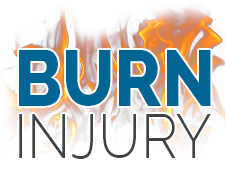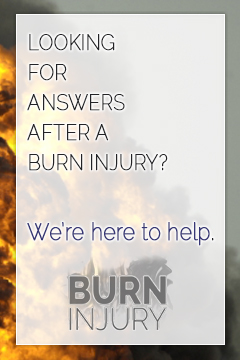Treating Third Degree Burn
Third degree burns are among the most severe categories of burn injuries. Third degree burn typically requires professional medical attention unless the burn injury is small. Treating third degree burn can be an extensive process that may take up to months, depending on the severity of the burn. During this time, patients will experience extreme pain that is often accompanied by emotional distress such as anxiety, depression, and self-image issues when scarring or disfigurement is present.
After a Third Degree Burn
Immediately after a third degree burn, any witnesses should first ensure that the victim is no longer in contact with the burn source or any items such as smoldering fabric or clothing. When the burn source is removed, call 911 immediately. Check to make sure the victim is breathing and alert the dispatcher of the victim’s state. In cases such as fire burns, airway burns caused by smoke inhalation can burn the windpipe and lungs, causing the airways to become swollen and close up.
Preparing for Help
Do not remove any clothing or other materials that are burned to the skin. The victim should not be doused in cold water, as this can cause shock or hypothermia, or a severe drop in body temperature. To help prevent shock, the victim can be laid flat with the feet elevated roughly one foot in the air. However, the victim should not be placed in shock position if he or she experiences head, back, neck, or leg injury, or if the position is uncomfortable.
Third Degree Burn Hospitalization
In most cases, the patient will require hospitalization for treating third degree burn. The severity of the burn is determined primarily by assessing the total body surface area (TBSA) of the burn injury. The TBSA measures how much of the victim’s total body is burned. In most cases, treating third degree burn begins with fluid resuscitation using intravenous (IV) fluids.
Debridement
After a patient is stabilized and IV fluids are administered, debridement will take place. Debridement is the process of removing dead and damaged skin from the burn injury. Treating third degree burn requires this step, as dead skin is highly susceptible to infection.
Antibiotics and Pain Medication
Treating third degree burn also involves the administration of antibiotics to prevent infection. Infection is one of the most common burn injury complications. Antibiotics may be administered orally, intravenously, or topically onto the burned area. The patient will also be given pain medication, as treating third degree burn is often painful and uncomfortable.
Skin Grafts
In many cases, treating third degree burn requires skin graft surgery. Skin grafts remove healthy skin from other areas of the body, such as the chest, thighs, or buttocks. The skin is then transplanted onto the burn area so that it can attach and grow to the exposed wound. Some patients may require several skin grafts before the wound is properly healed.
Treating Third Degree Burn Long-term
After the initial stages, many patients will require therapy that can last months or years. Physical therapy can help to restore movement to patients whose skin contracts, or pulls together. This creates difficulty with movement, especially when the victim is burned over joints. Psychiatric therapy may be needed for patients who suffer post-traumatic stress disorder (PTSD), anxiety, depression, and self-image issues due to disfigurement or scarring.
Sources:
“Burn Treatment.” Surgical Products Oct. 2001: 34. Academic OneFile. Web. 22 Dec. 2013.
Pedragosa, Robert, et al. “Blisters over Burn Scars in a Child.” The British Journal of Dermatology 115.4 (1986): 501-506. MEDLINE with Full Text. Web. 22 Dec. 2013.
Rajpara, S, A Affleck, and S Varma. “Transient Graft Hypertrophy Following Full-Thickness Skin Graft.” The British Journal of Dermatology 163.3 (2010): 658-659. MEDLINE with Full Text. Web. 22 Dec. 2013.
Shimizu, Ruka, and Kazuo Kishi. “Skin Graft.” Plastic Surgery International (2012): 1-5. Academic Search Complete. Web. 22 Dec. 2013.













